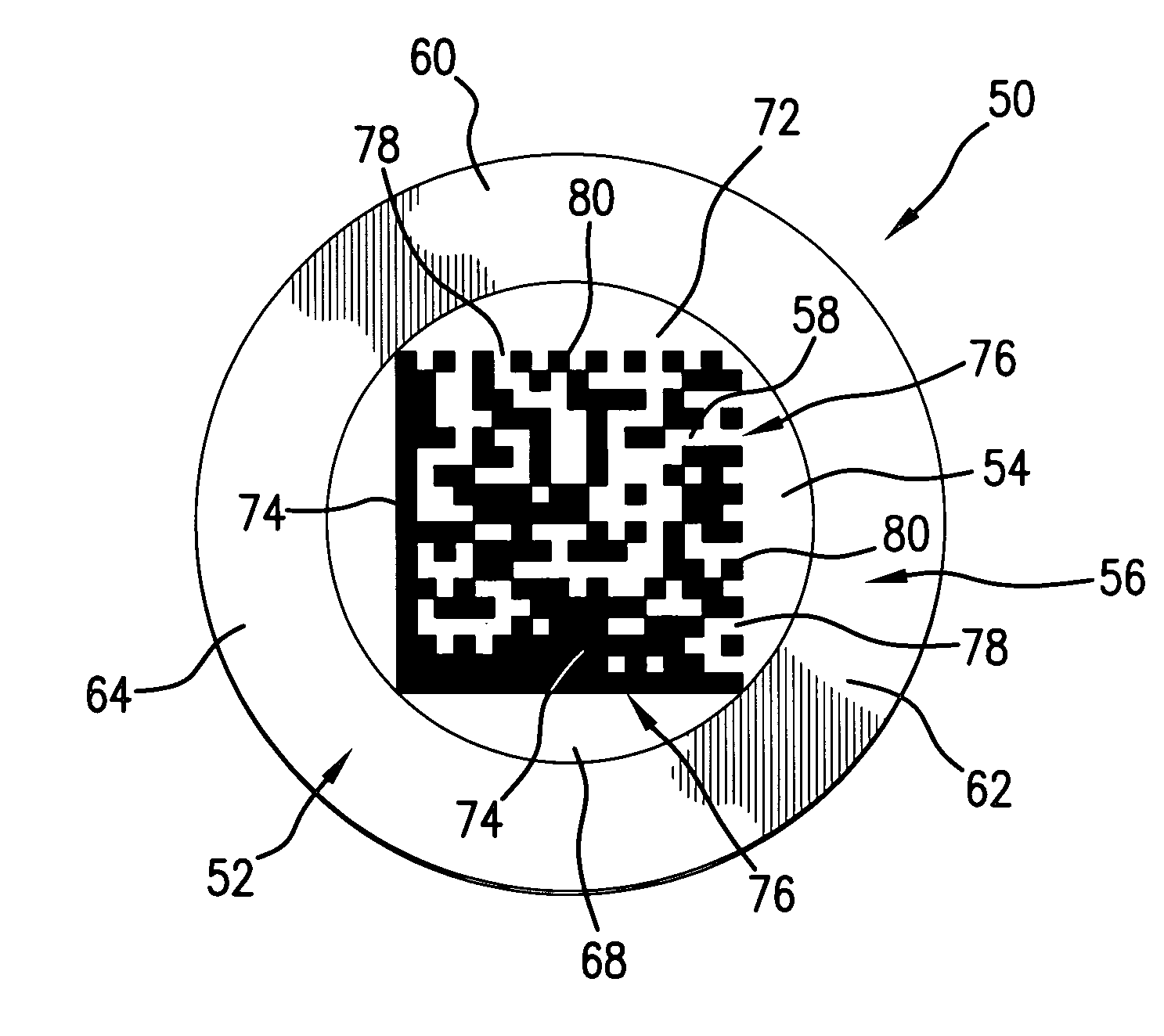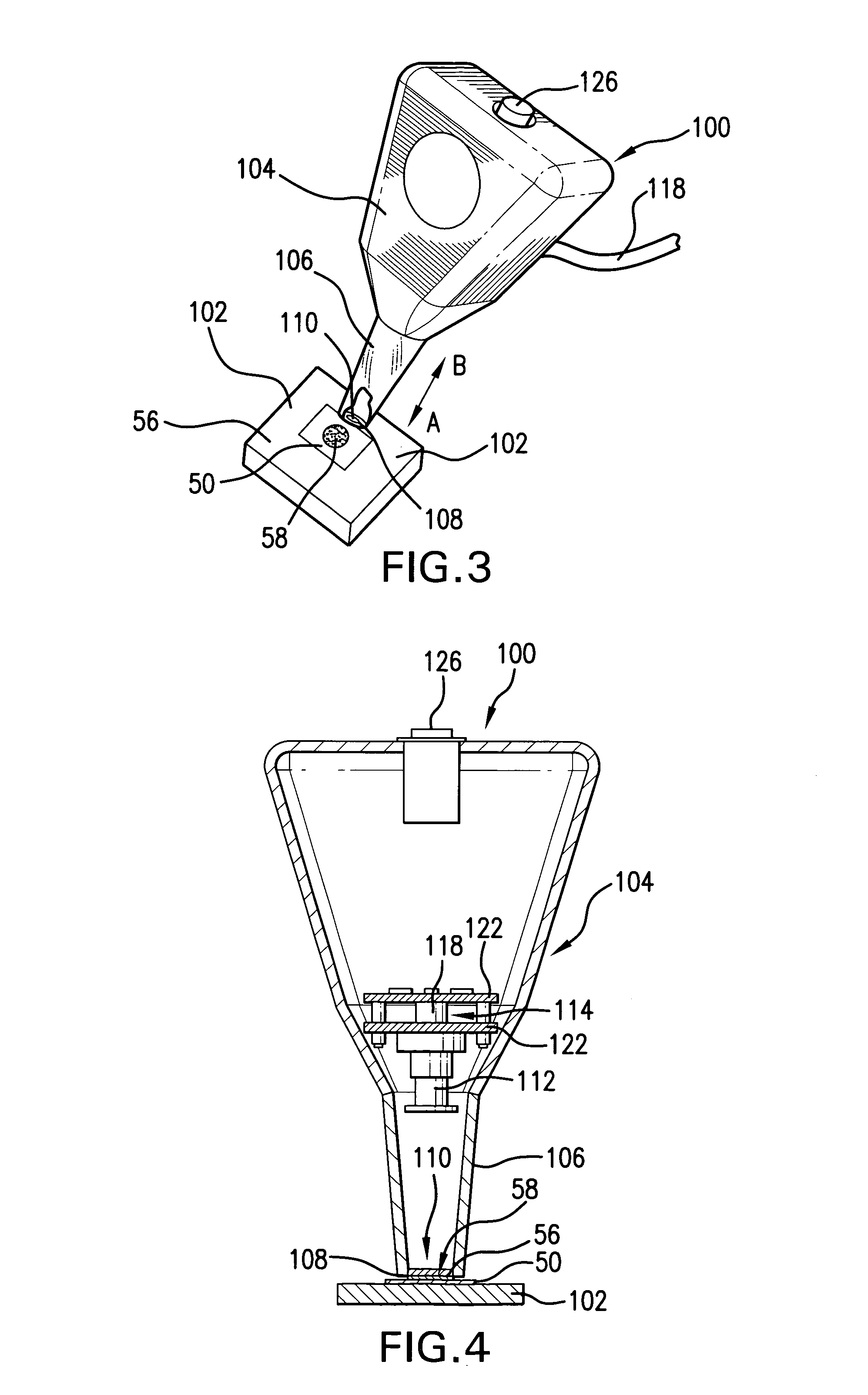Authentication of source, plus, for goods and services system, method, and components
a technology of authenticating source and goods and services, applied in the direction of program control, testing/monitoring control system, instruments, etc., can solve the problems of widespread counterfeiting, theft and diversion, actual lost sales and profits attributed to wrongful activities, etc., to reduce counterfeiting, reduce the cost of doing so, and reduce the risk of being caught.
- Summary
- Abstract
- Description
- Claims
- Application Information
AI Technical Summary
Benefits of technology
Problems solved by technology
Method used
Image
Examples
Embodiment Construction
[0058]With reference to FIGS. 1 & 2 there is generally shown an authenticator 50 incorporating the instant invention and which is fabricated from an authenticator blank 52 of predetermined configuration, size and thickness. While authenticator 50 is shown as fabricated from a circular blank 52 it may just as well be fabricated from a blank of any convenient configuration such as square, triangular, oval, hexagon, octagonal, or the like, depending on the information to be carried by the authenticator and the aesthetics and other criteria of the authentication system and authentication system provider. Authenticator blank 52 is preferably fabricated from good quality steel or other metal, or combinations or compounds of metal, and so as to provide a data field 54 on a surface 56 that will accept encoded symbology 58 applied therein as by direct part markings such as by dot peening. Ceramics, glass, plastics and other materials, natural and / or synthetic, suitable to accept direct part ...
PUM
 Login to View More
Login to View More Abstract
Description
Claims
Application Information
 Login to View More
Login to View More - R&D
- Intellectual Property
- Life Sciences
- Materials
- Tech Scout
- Unparalleled Data Quality
- Higher Quality Content
- 60% Fewer Hallucinations
Browse by: Latest US Patents, China's latest patents, Technical Efficacy Thesaurus, Application Domain, Technology Topic, Popular Technical Reports.
© 2025 PatSnap. All rights reserved.Legal|Privacy policy|Modern Slavery Act Transparency Statement|Sitemap|About US| Contact US: help@patsnap.com



